Leonard Matthews, General Managing Editor of Fleetway and the Eagle Group of Comics, was a “Creative Visionary”… but that, Roger Perry argues in his extensive biography of the man which continues here on downthetubes, is only due to him having utilised the ideas of others.
Here’ Roger charts ongoing behind the scenes tampering that hampered the editorial tams on Eagle and Girl…
“Once He’d Got his Mind Set,
He Would Brook No Opposition…”
A quote made by Brian Woodford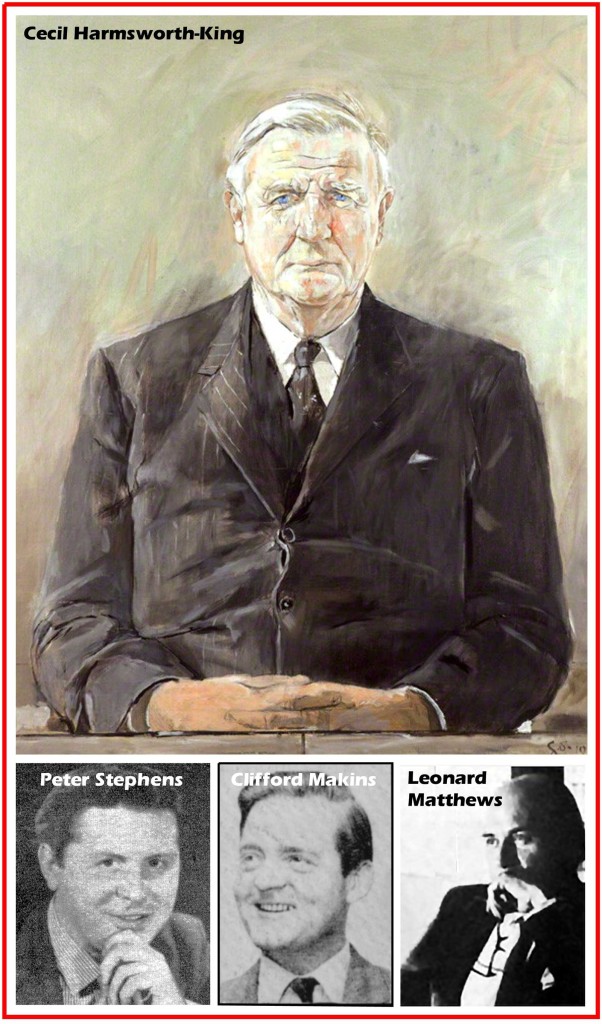
These recollections have been brought sharply into focus through having read a book called Living with Eagles: Marcus Morris, Priest and Publisher – a biographical account of the Reverend Marcus Morris as compiled and written by his two daughters – Sally Morris and Jan Hallwood. Within the pages of this most informative book, there is an interview with Leonard Matthews. But on reading it, it would appear that his recollections of that tempestuous period don’t quite fall in line with those recollections by others who had experienced those same events. Could this be due to them having been recounted some twenty, if not thirty, years after the events he speaks of and that a certain amount of brain-washing in the meantime has taken effect?
1961
Towards the end of Part Three, I spoke of the despondent mood that staff of Juvenile Publications had found themselves in during 1961. But if the truth be told, there had been an element of nervousness rippling about the Hulton House Fifth Floor virtually from 1959 onwards – from the moment when Ellen Vincent and Marcus Morris had both decided to leave and head off for pastures new. Adding to that, it was now coming to light – certainly amongst senior management – that well before that ominous date of the 22nd March 1961 take-over, indeed, several months beforehand, Matthews had already taken steps to find out more about the Eagle Group and its comics.
In theory, what he had done had been tantamount to an act of industrial espionage… an act whereby Matthews had been far more conniving than ever he cared to admit. But then, if he had been elected as a member of Hulton’s board (as divulged by Cecil Harmsworth-King, chairman of Daily Mirror newspapers, Sunday Pictorial newspapers and the International Publishing Corporation), then I suppose you could arguably say that he’d had every right to do what he did… but not three-to-four months prior to the appointment which was when he’d done the dastardly deed… It’s all a matter of timing.
Although the Director of Juvenile Publications (as Matthews was now being called) had been keeping a fairly low profile in regard to the machinations of the Eagle group, the first indication of his underhand shenanigans had come about with the sudden appearance (during the early part of January 1961) of one certain Peter Stephens.
Worming his way in from a Fleetway Publications magazine – for he’d previously been employed upon a paper called School Friend – Stephens had unexpectedly become appointed as Deputy to the Managing Editor of the Eagle group (the latter man having been the more-than-bewildered Clifford Makins).
I’m sure that it will not have escaped your notice that I have used the words unexpectedly and bewildered – for no-one at Juvenile Publications actually knew that there had been a vacancy of Deputy to the Managing Editor to be filled. As I’ve noted in previous articles, there had been none of the usual announcements posted in the principle London trade journals (such as Bookseller and Campaign) where notification of this prestigious (allegedly) vacant position could have been seen by all those interested. No other Longacre Press employee had been invited to apply for this highly-esteemed position, either. There had also been no interview as such – for Stephens was already well-known to Matthews and therefore hadn’t needed one. It was, in fact, a bald case of a fait accompli… out of the blue, it just happened. Leonard Matthews – the newly-appointed Director of Fleetway Publications – was slowly-but-surely getting more than a foot-hold inside the Eagle group door.
In his reviewing of the situation, Eagle group contributor David Slinn has said this:
As to the circumstances of Peter Stephens’ arrival on the scene in January 1961, admittedly, there’s no argument that his appointment, as Deputy Editor to Clifford Makins remains shrouded in mystery; plus the wariness of any individual bringing their creative ideas from down the road in Farringdon Street. However, for him to be at his desk almost immediately after the Christmas break, with the kind of formalities involved in staff employment in those days, it would almost certainly have been completed, much earlier in December.
This is not quite accurate since, as we have already seen, the likes of Brian Woodford having been moved from one paper to another on a whim. (Plus, you will read in Part Five how Art Editor John Jackson was transferred at the drop of a hat to fill the very sudden vacancy created on Juvenile Publications). It would appear that for Matthews, moving people about had all been part of the normal run of things.
A month or so later – In a conversation between Eagle Editor Derek Lord, Eagle Art Editor Charles Pocklington and Managing Editor Clifford Makins (one that had taken place in the circular corridor that ran along outside their individual offices), Lord was overheard making the hypothesis that perhaps Stephens had been brought in to purely act out the role of a spy… for there could have been no other reason as to why the man had been engaged.
In the “News from Eagle” announcement dated 11th March 1961, the comic’s regular editorial page, Clifford Makins says that he has persuaded Stephens to write for Eagle whenever he has a moment to spare. As far as I know, Peter Stephens never wrote a single word for Eagle – let alone an article, or any item for its sibling papers during the whole time he had been employed with Juvenile Publications. (His employment ran from January 1961 right through to late-spring / early-summer 1964).
The only thing Stephens did do (for I had naturally been a witness to it) was to capture half-a-dozen photographs of yours truly in preparation for an up-and-coming series of articles that went under the name of “The Roving Reporter”.
Around late March or early April, three months after Stephens had taken up his Deputy-to-the-Managing-Editor appointment, heated exchanges in the form of memos had begun to flow menacingly between Hulton House (Clifford Makins) and Fleetway Publications (Leonard Matthews). The subject of these heated interactions had been over a series of articles that for a number of years had been regularly appearing in Girl. It was an editorial feature that had gone under the heading of “What’s Your Worry”, where readers could write in with their alleged problems and where the printed replies had been authored by the professionally qualified child psychologist Doctor James Hemming, who died in 2007.
However, not all letters that were received, nor indeed their replies, were deemed as being suitable for publication (certainly not within the pages of Girl – for had they been so, the outcome would have resulted in them having been seen and read by all and sundry). Those letters judged as being far too sensitive for publication were replied to in person by Dr Hemming, who had taken it upon himself to write personal replies to the individual girls concerned. This had been done with the full knowledge and backing of the Reverend Marcus Morris, who had physically signed each and every letter prior to it having been posted off.
Following Morris’s departure in 1959, these letters were subsequently signed by his replacement – Clifford Makins… and it was these personally-authored letters that had greatly angered Matthews.
It needs to be noted that the awareness of these letters – both those that had arrived and their subsequent replies – could only have come about through the snitching of undercover agent Peter Stephens who was only doing the job that he’d been employed by Matthews to do.
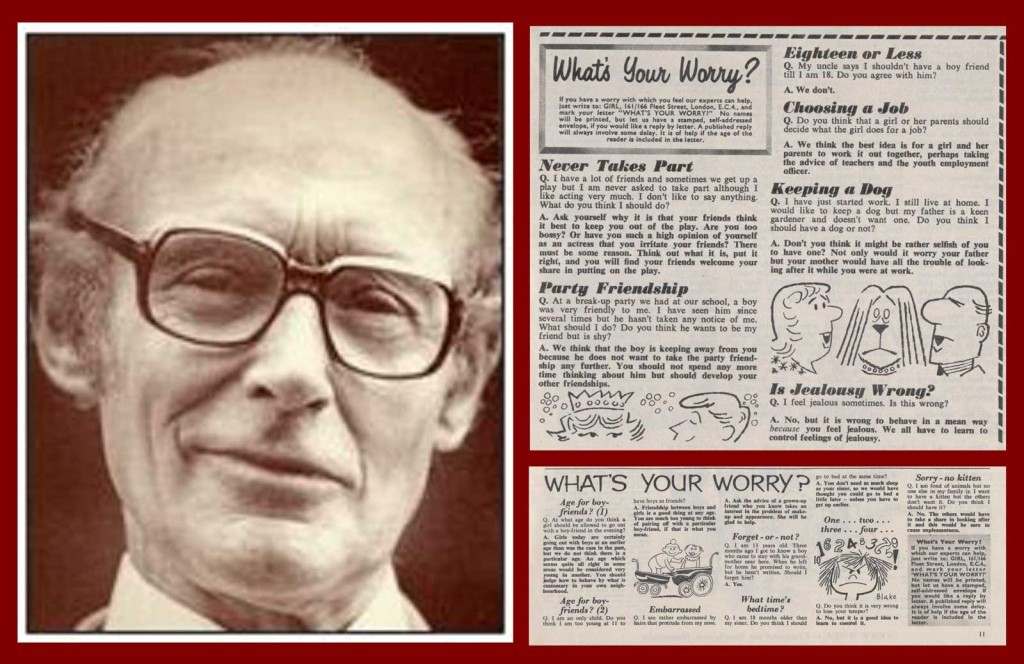
Doctor James Hemming and examples of the “What’s Your Worry” problem pages that featured in Girl, with artwork by Brian Blake
Now, while all this was going on, artist David Slinn had been drawing “The Robin Reading Strip”. His unhappy connection at this point had been due to the said magazine’s weekly strip also being devised and scripted by Doctor Hemming. Slinn recalls that this had been a time that had been exceedingly unsettling to say the least.
However, having said that, it would also appear that most of the lower and possibly middle echelon too had known little or nothing of this battle-between-the-giants… not until, that is, they’d all had the chance to read the account for themselves in Sally Morris and Jan Hallwood’s book Living with Eagles.
The following entries are (marginally edited and abridged) passages from pages 221 and 222 of their book:
Pat Jackson: We were not impressed with anything about this new organisation. The little man in the brown suit [Leonard Matthews], who thought of himself as Napoleon came and had us all lined up, and walked up and down the row telling us that things were going to be different from now on. He’d had the audacity to refer to James Hemming as a dirty old man who liked reading little girls’ problems. We were totally affronted.
Hemming: After Marcus left, they got hold of my secretary and said they wanted to see the letters I had copies of. Whoever was in charge faced me with one in which I had tactfully said: “Well, obviously your Mummy and Daddy are very worried about you, but you must realise you’re a person in your own right and remember that if they’re cross with you, it may be because they’re anxious”.
Matthews told Hemming: “Frankly I am astonished to learn that a member of the editorial staff of Girl should take upon himself the overly tricky and unauthorised task of giving guidance on sexual matters to an eleven years old girl… in my opinion this letter of Hemming’s is irresponsible, if not wicked.”
Clifford (now furious) responded: “Your memo seems to me to be most unfortunate in tone. To call Hemming irresponsible and wicked betrays an attitude of mind which, quite frankly, is beyond my comprehension. I protest, most vigorously against your order that the ‘What’s Your Worry’ column cease forthwith.”
Matthews: We could be hauled over the coals for this. That letter is turning the child against its parents – we can’t have someone like Hemming around. Out!
Hemming: That was the appalling difference. Marcus had the interests of the readers at heart. He saw everything I wrote because he signed the letters and he hadn’t the slightest apprehension about being frank.
Despite what Matthews had or hadn’t wanted, the feature must have been not just popular, but possibly a desperate lifeline for some of these supposedly unhappy girls – particularly those readers who felt they had no-one else they could turn to for help and advice. Despite several notices saying that the service had been discontinued, letters had continued to flow in for quite a few months, thus giving the new regime something else to think about.
In a paragraph taken from the magazine of the Eagle Society, Eagle Times summer 2004 issue, Derek Lord wrote:
Eventually Clifford felt obliged to step down, attacked on all sides – Matthews and Cudlipp (the puppet management of Longacre Press), and undermined by Peter Stephens, a veritable Trojan Horse from Fleetway who was ensconced as Deputy Overall Editor, with all the other editors losing their individual offices (to reduce their status) and then had retired into a private room himself. Soon after that he refused to even speak to Clifford at all.
Part Five continues with Destruction Day when all hell had been let loose; when several key staff had opted to leave; and where Matthews’ chosen substitutes – clearly well-past-their-sell-by-dates (and possibly having outlived their usefulness at Fleetway) – had been brought in to replace those who had left.
Roger Perry
The Philippines
With acknowledgements to David Slinn and to Darren Evens of Eagle Times for providing certain scans used in this article
[divider]
More Eagle Daze…
Eagle Daze: The Life and Times of Leonard James Matthews
• Eagle Daze: The Life and Times of Leonard James Matthews – Part One
Roger explores the beginnings of the destruction of the Eagle…
• Eagle Daze: The Life and Times of Leonard James Matthews – Part Two
The comic magazine Top Spot, published in 1958, was Matthews’ brainchild – but it was the male counterpart of an already existing magazine and it was a title that faced plenty of problems as it ran its course before merging with Film Fun after just 58 issues…
• Eagle Daze: The Life and Times of Leonard James Matthews – Part Three
Roger outlines how Matthews jealousy almost destroyed the Eagle…
• Eagle Daze: The Life and Times of Leonard James Matthews – Part Four
Roger reveals a possible mole working on the Eagle and trouble behind the scenes on Girl…
• Eagle Daze: The Life and Times of Leonard James Matthews – Part Five
How a Marks & Spencer Floor Detective Became Managing Editor of Eagle…
• Eagle Daze: The Life and Times of Leonard James Matthews – Part Six
Roger reveals how Dan Dare co-creator Frank Hampson was thorn in Leonard Matthews side…
• Eagle Daze: The Life and Times of Leonard James Matthews – Part Seven
Trouble at the top for ‘The Management”, the troubled debut of Boys’ World – and the demise of Ranger
• Eagle Daze: The Life and Times of Leonard James Matthews – Part Eight
On the creation of Martspress, the company that would publish TV21 in its later, cheaper incarnation…
• Eagle Daze: The Life and Times of Leonard James Matthews – Part Nine
Moving from the sublime to the ridiculous, Roger recalls how Men Only was given a new lease of life – and Leonard Matthews’ ignorance of Star Wars…
• Eagle Daze: The Life and Times of Leonard James Matthews – Part Ten
A phone-call out of the blue brings about a closer relationship with the one man Roger had once feared the most…
• Eagle Daze: The Life and Times of Leonard James Matthews – Part Eleven
A search for elusive promotional film stills end in the middle of nowhere in a one horse town without a horse – and Eagle‘s production methods are recalled
• Eagle Daze: The Life and Times of Leonard James Matthews – Part Twelve
Roger clarifies points made in past chapters, looks back on Leonard Matthews career – and sums up his contribution to British comics – and publishing in general…
[divider]
This article, which is being published in a total of twelve parts, has been put together using material from Leonard Matthews’ obituary as written by George Beal for the Independent newspaper dated Friday 5th December 1997; also taken from the Independent newspaper dated Sunday, 23rd October 2011 is a piece authored by Jack Adrian (a.k.a. Christopher Lowder); Living with Eagles compiled and written by Sally Morris and Jan Hallwood (particularly pages 219 to 222); David Slinn’s research notes during 2005 in connection with the authoring of Alastair Crompton’s Tomorrow Revisited and from Brian Woodford’s association with Matthews at the Amalgamated Press between 1955 and 1962.
Entries also come from both Wikipedia and from the internet under the heading Fleetway Publications. Further pieces have been taken from Eagle Times as and where identified; the blog-spots of Michael Moorcock’s Miscellany (particularly 9th and 10th April 2013) and Lew Stringer’s Blimey! where he refers to the Top Spot magazine. The remainder is from my own personal association with Leonard Matthews between the years of 1978 and 1991.
[divider]
• You can read Roger Perry’s full biography here on Bear Alley
Artist, designer, photographer and writer Roger Prölss Perry was the youngest of three children – the given name of Prölss deriving from the maiden name of his paternal German grandmother.
Born in Guildford, Surrey in July 1938, after school he studied at the Regent Street Polytechnic School of Art close to Oxford Circus, the West End and the BBC where he achieved the National Diploma in Arts and Design before commencing with a further year of study in commercial design under the guidance of Ley Kenyon DFC, noted for his writing, art and underwater photography, and lithographer Henry Houghton Trivick (1908-1982).
His first job in the media industry was as an in-house illustrator on Farmers’ Weekly, beginning in March 1959, working under the direction of Art Editor Alfred Harwood, working on the seventh floor of Hulton House at 161-167 Fleet Street, London. He was there for just five months before going into two years of National Service until August 1961, returning to the company (now Long Acre Press) as a layout artist (designer) at “Juvenile Publications”, the umbrella name for Eagle, Girl, Swift and Robin. He joined the team of three other layout artists – Bruce Smith, Ron Morley and John Kingsford – on Monday, 28th August 1961 where he remained until May 1966.
He then began work as Art Editor at Century 21 Publishing until June 1969. As he says: “Yes, I suppose I could be described as a ‘layout artist’ but I commissioned art (Art Editor), kept an eye on Andrew Harrison and Bob Reed (Studio Manager), took photographs as and when needed (Resident Photographer) and generally made sure that everything was present and correct when everything needed was being sent to the printer (Office Boy). I also (with the help of Linda Wheway) came up with the ideas and photographs for five books (Author?)”.
From Century 21 Publishing, Perry then went to Hamlyn Books (July 1969 to October 1970); and worked for Bob Prior’s premium packages for two months before joining ex-Art Editor of Century 21 Publishing Dennis Hooper in December 1970 who was now Editor of Countdown at Polystyle Publications.
Perry remained with Polystyle until September 1974, when he became Art Editor for Purnell Books, remaining with the publisher for eleven years – until 1985 when he started operating his own public relations business.
Due to his growing interest in the art and the close proximity of Bath where the nerve centre of the Royal Photographic Society is, he achieved the distinction of Associate Member in 1987 for audio/ visual presentations thus entitling him to display the letters ARPS after his name… although he rarely does.
Having had a life-long fascination for the Far East, he moved to the Philippines in the 1990s, where he married Marilyn Gesmundo. He lived for 11 years on Cataduanes before moving a number of times recently following Typhoon Haiyan, finally with Raquelyn Navarro in the city of Naga in Cebu.
Sadly, Roger died on 23rd July 2016 following a heart attack, just one day after his 78th birthday.
He is survived by his daughter, Rae. His son, Marcus, predeceased him after a long battle with cancer.
Categories: British Comics, Creating Comics, Features
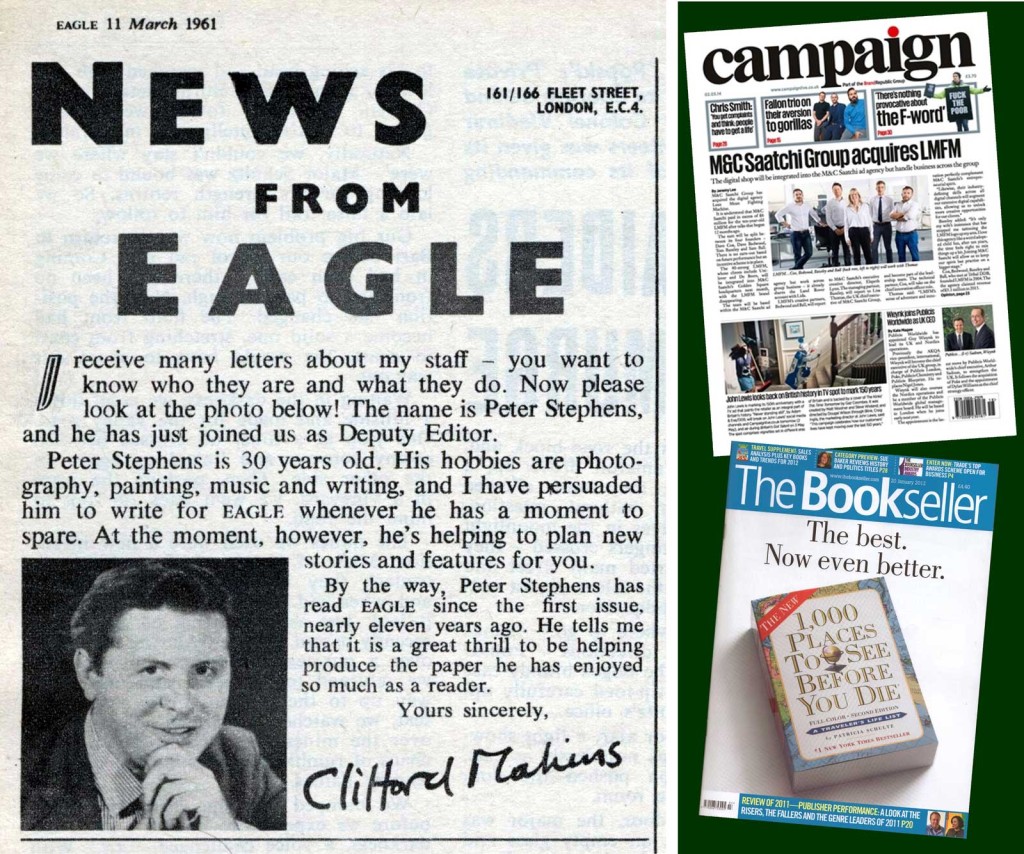

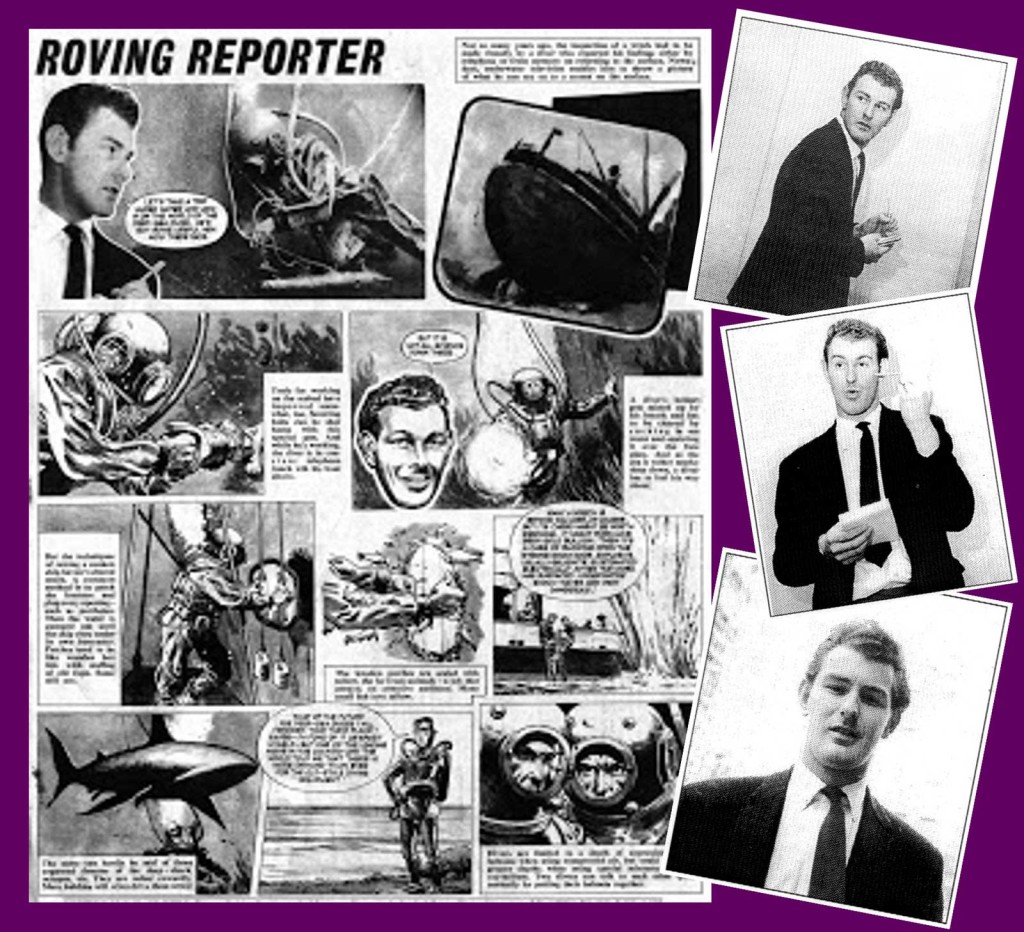
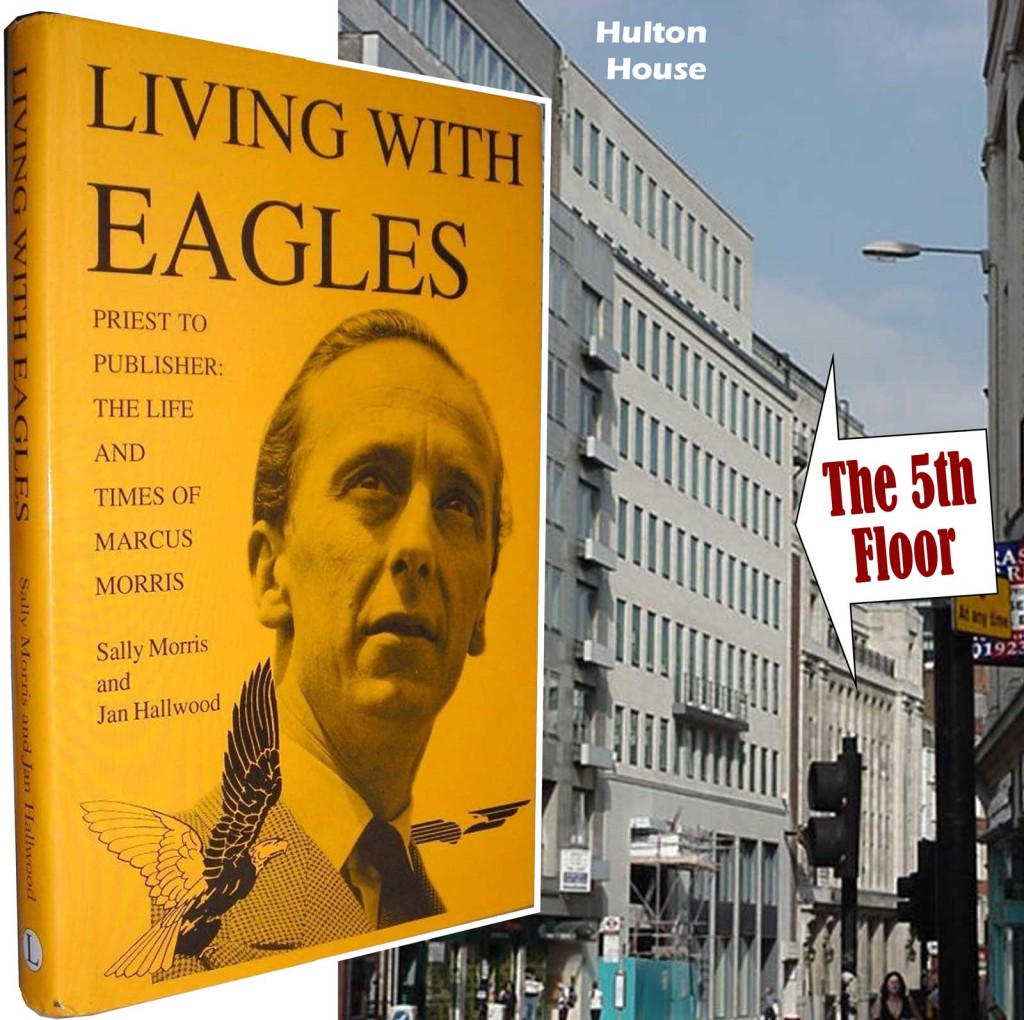
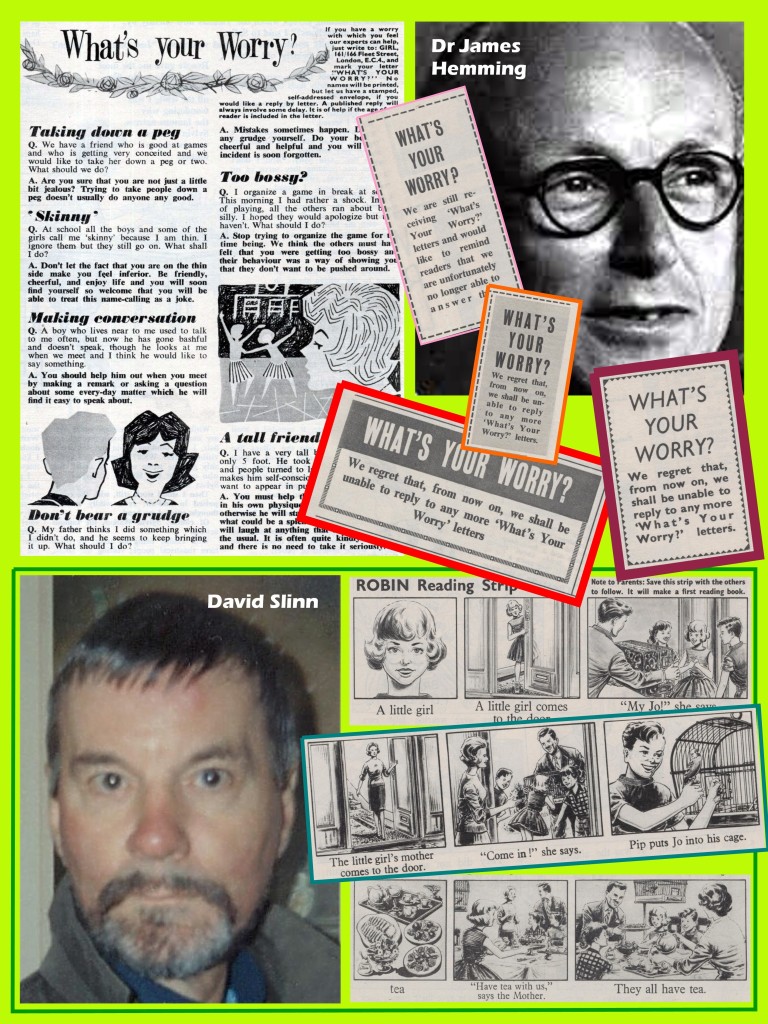
 The SEQUENT’ULL Interviews: Dan White
The SEQUENT’ULL Interviews: Dan White  The SEQUENT’ULL Interviews: Michelle Freeman
The SEQUENT’ULL Interviews: Michelle Freeman  The SEQUENT’ULL Interviews: Colossive Press
The SEQUENT’ULL Interviews: Colossive Press  In Review: “3 Stories featuring An Egg, A Saint, and Border Guards” by Edward Taylor
In Review: “3 Stories featuring An Egg, A Saint, and Border Guards” by Edward Taylor